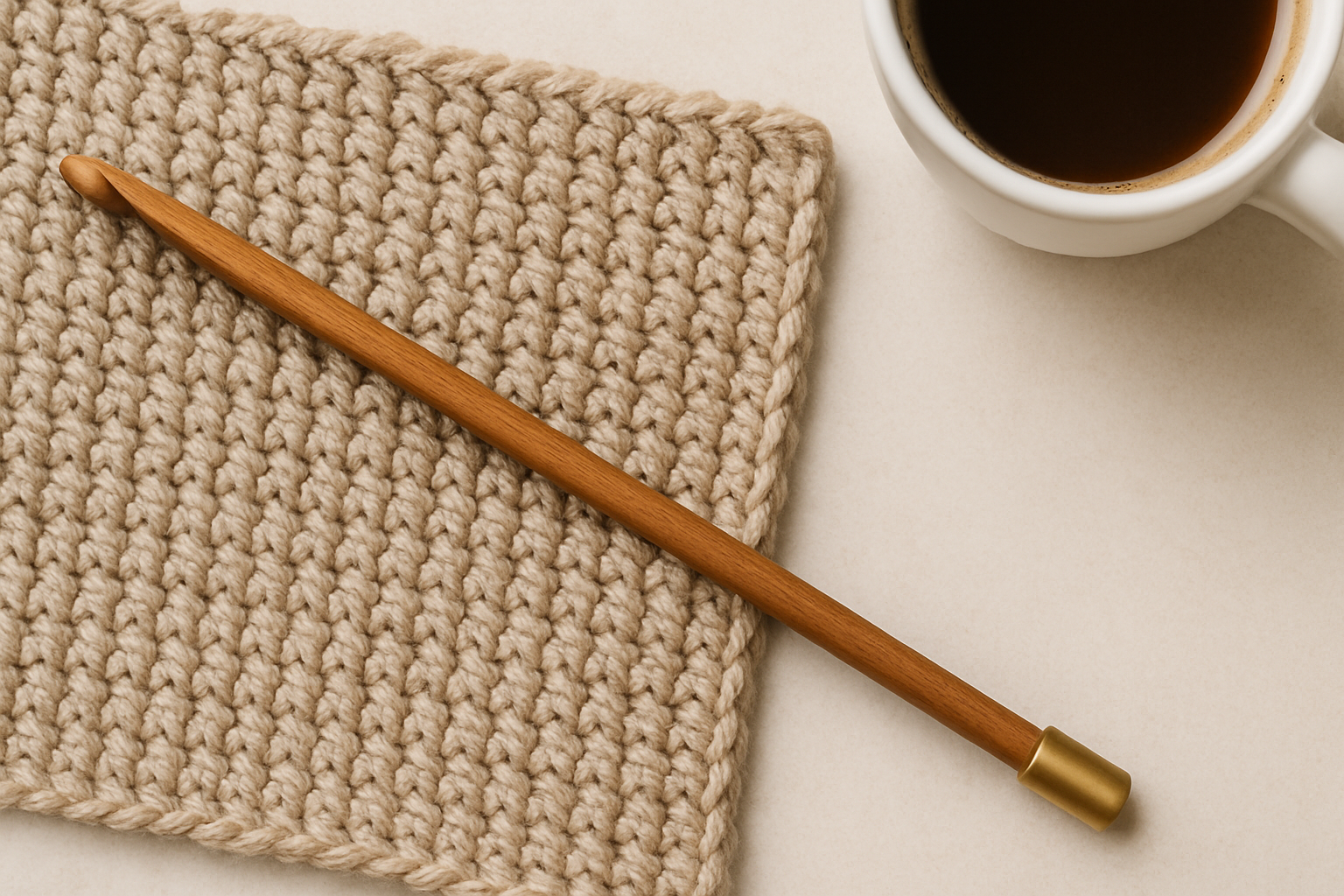Tunisian crochet, often described as a blend between crochet and knitting, has gained popularity for its unique texture and versatility. Central to mastering this technique is understanding the Tunisian crochet hook, a special tool that differs significantly from traditional crochet hooks. This article will guide you through what a Tunisian crochet hook is, how it’s used, the different types available, and tips for choosing the right one for your project.
What Is a Tunisian Crochet Hook?
A Tunisian crochet hook is a long hook, typically 10 to 14 inches in length, and resembles a knitting needle with a crochet hook tip. Unlike regular crochet, where you work one stitch at a time, Tunisian crochet involves keeping multiple stitches on the hook—similar to knitting. The extended length allows you to hold many stitches at once without them slipping off.
Some Tunisian hooks also come with a flexible cord attached at one end (known as an afghan hook with cable), making it easier to work on wide projects like blankets or shawls.
Types of Tunisian Crochet Hooks
There are several variations of Tunisian crochet hooks, each serving specific needs:
1. Straight Afghan Hook
- Looks like a long knitting needle with a hook on one end.
- Best for smaller projects such as scarves or dishcloths.
- Length usually ranges from 10 to 14 inches.
2. Tunisian Hook with Cable
- Has a hook on one end and a flexible cable extending from the other.
- Ideal for large projects like afghans and garments.
- The cable allows for more stitches and flexibility in movement.
3. Double-Ended Tunisian Hooks
- Features hooks on both ends.
- Used for working in the round or for color changes.
- Great for advanced Tunisian techniques like double-ended or circular crochet.
Materials Used in Tunisian Crochet Hooks
Tunisian crochet hooks are available in various materials, and the choice depends on your preference:
- Aluminum: Lightweight and smooth; great for fast crocheting.
- Wood or Bamboo: Warm to the touch, eco-friendly, and good for beginners due to more grip.
- Plastic: Lightweight and affordable, available in many colors and sizes.
Each material feels different in the hand, so it’s worth experimenting to find what you like best.
How to Use a Tunisian Crochet Hook
Tunisian crochet uses a two-step process: a forward pass and a return pass.
- Forward Pass: You pick up loops across the row, keeping all the stitches on the hook (like casting on in knitting).
- Return Pass: You work the loops off the hook in reverse, usually with yarn overs and pull-throughs.
This method creates a fabric that is thicker and less stretchy than traditional crochet—perfect for items that need structure.
Projects That Use Tunisian Crochet Hooks
With a Tunisian crochet hook, you can create a wide variety of textured and durable projects, such as:
- Dishcloths and washcloths
- Shawls and scarves
- Blankets and afghans
- Bags and pouches
- Cushion covers
- Sweaters and cardigans
Tunisian crochet patterns often produce intricate woven or knitted-looking designs that are visually striking and satisfyingly solid.
Tips for Choosing a Tunisian Crochet Hook
- Match hook size to yarn: Use the same size as recommended for traditional crochet, or go one size larger to prevent tightness.
- Consider project width: For wide items, use a hook with a cable or extra length.
- Test comfort: Since projects can be time-consuming, choose a hook that feels good in your hand and reduces fatigue.
Benefits of Using a Tunisian Crochet Hook
- Unique textures: The stitches resemble knitting but are made with a hook.
- Fabric stability: Tunisian crochet creates a thicker, more structured fabric.
- Creative flexibility: Ideal for colorwork, textures, and geometric designs.
- Cross-skill enhancement: A fun option for both knitters and crocheters looking to expand their skills.
Conclusion
The Tunisian crochet hook is an essential tool for anyone interested in exploring this captivating crochet technique. With its distinct design and multiple variations, it opens the door to projects that merge the best of crochet and knitting. Whether you’re crafting simple scarves or intricate afghans, having the right Tunisian hook in hand will elevate your creations in both texture and structure.
Once you get comfortable with the Tunisian crochet hook, you’ll find it to be a satisfying and endlessly creative addition to your fiber arts toolkit.

